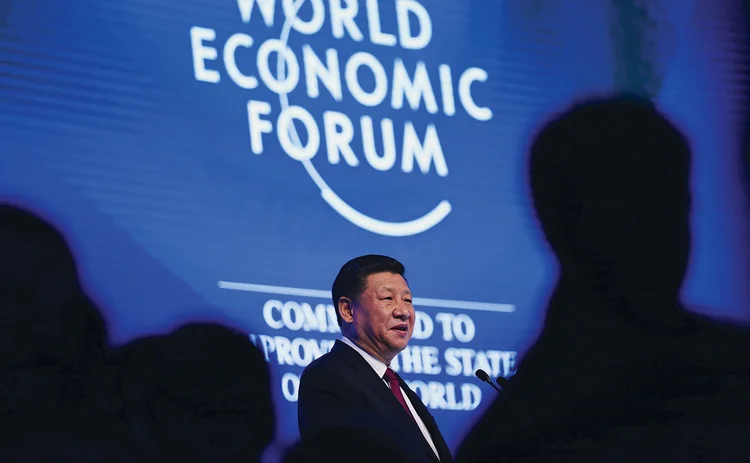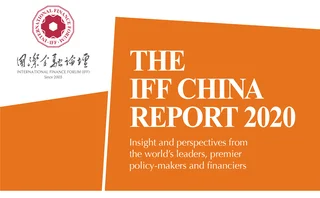
Access all areas – Tapping into China’s capital markets


The International Capital Market Association (ICMA) is a trade association whose many members primarily belong to the private sector – some central banks, but mostly financial institutions and issuers; intermediary, primary and secondary investors; and market infrastructure providers. All of these institutions are interested in how debt capital markets operate, and they attach great importance in particular to the opening-up of the Chinese Interbank Bond Market (CIBM).
A balance between direct and indirect funding is extremely important. Generally, in developing markets, the level of capital markets funding is relatively low compared with bank funding. This is still the case in China. If you compare the US – which is probably the most sophisticated nation in its capital markets funding – around 70% of the industry has been financed through this type of funding. In Europe, the figure is somewhere in the middle – around 30% – and then it is slightly lower in China.

China’s policy objective is to increase the allocation of capital through the capital markets – a common objective that wins support in other areas such as the European Union, which is currently focusing on a capital markets union. Financing through the capital markets not only facilitates capital allocation, but also increases capital flow across borders, which is much easier in debt capital markets than banking markets.
The mazy road to market access
There is no simple route to China’s policy of reform and opening-up – there are bound to be deviations and setbacks. Nevertheless, the direction of opening-up has been unwavering. In 2017, at the World Economic Forum in Davos, President Xi Jinping presented an impressive defence of globalisation, saying that globalisation should not be thrown out, and that multilateralism was still important.
This is why the ICMA has been working with Chinese infrastructure providers and banks over the past decade to aid this internationalisation process. The CIBM is now the second-largest bond market in the world, and is simply too big to be ignored. The opportunities here are absolutely immense, yet the level of international investment is still less than 3%.
Many steps have been taken to allow for international investors’ access: reforms are moving quickly on removing quotas, for example. Nevertheless, China started from a relatively low base, where the market was closed to international investors. Even now, it remains a challenge for international investors to understand what is needed to enter into the market.
We have to look not only at the investment side but also at the other route for issuers to actually tap into the money in China. Investors and issuers need predictability and clarity – not opaque regulation and uncertainty in rules and timeframes – and transparency around what they need to do to get into the market.
All participants – ranging from the world’s largest investor groups all the way down to small private banks – require the process to be transparent. These large groups are well structured, and will most likely have Mandarin speakers on their staff or an office in China to analyse how to access the market. But the new round of opening-up needs to make market access easier for the next level down – a normal process of investing in which prospective participants don’t have to dedicate too much time understanding how to access the market and what to expect.
Some routes to access the market already exist – including Bond Connect, the Qualified Foreign Institutional Investor programme or the Renminbi Qualified Foreign Institutional Investor programme – but what to expect once access is gained is unclear to many investors. There is a lot of work to be done internationally to familiarise them with what they will find there: What are the dynamics of the market? How much of the market is government bonds? How much of the market is policy banks? What’s happening to the credit sector? What’s happening in terms of ratings? We know international rating agencies can now operate in China, which is a big step forward. But how does that compare with the ratings they expect internationally? What are the regulations on bankruptcy and insolvencies?
The problem is not unique to China. The EU is a hotchpotch of legislation, with insolvency laws by no means harmonised. Creating a unified capital market in Europe is a big issue. But these are the things we could work on together: What are the liquidity dynamics? What are the new issue dynamics?
From an issuer’s perspective, some clarity around the regulation for the issuance of Panda bonds being more active is welcome news. There are many ways to familiarise participants with the Chinese market and communicate the information needed to access the market: more roadshows, conferences – Chinese securities summits, for example – and investor centres in the US, Europe and other parts of the world.
Thematic investment – Green finance and fintech
China is already a leader in the widening arena of thematic investment. One of the best examples of this is the growth of environment, social and governance, sustainability and green finance. This new trend has been working its way to the the forefront of investing since 2007, when the first green bond was issued by the World Bank and the European Investment Bank. China has led the way in this field and is still the only country with comprehensive regulation around the green bond market. It has a catalogue of qualifying assets and projects and a number of well-developed supervisory regulations. Chinese companies, both domestically and internationally, have been heavy users of the green bond market.
In the West, the green bond market has been driven largely by investor demand – investors are putting up their hands and saying they want more sustainable products in their portfolios. In China, however, the process has been slightly different. It has been a faster, top-down approach – and, frankly, easier to implement than in other countries, which can become bogged down in almost interminable political discussion.
The development of a green bond market should not be underestimated – it is currently the biggest growing trend in the capital markets. In most of the Western world, green bonds were kicked off by the investor base, but most of its governments are now very much on board with this. Governments are starting to equate climate risk with financial risk in the long term. As a result, many central banks have been able to foster green bonds as part of their remits.
The other big theme in the market is financial technology – known as fintech. Again, China is a leader in this realm. Fintech is not something to be frightened of, but an enabler, streamlining the financial markets to become much more efficient and effective.
One example of innovation in fintech is a host of applications that can be used in alternate parts of the value chain of capital markets. This innovation has been around for a couple of decades in the secondary market, and in the post-trade space of the repo and collateral markets.
Another example is using a fintech application that completely rewrites a process and may disseminate part of the existing value chain. In the future, investors and issuers could implement certain types of fintech that will allow them to get together without the need for intermediaries.
Only users who have a paid subscription or are part of a corporate subscription are able to print or copy content.
To access these options, along with all other subscription benefits, please contact info@centralbanking.com or view our subscription options here: subscriptions.centralbanking.com/subscribe
You are currently unable to print this content. Please contact info@centralbanking.com to find out more.
You are currently unable to copy this content. Please contact info@centralbanking.com to find out more.
Copyright Infopro Digital Limited. All rights reserved.
As outlined in our terms and conditions, https://www.infopro-digital.com/terms-and-conditions/subscriptions/ (point 2.4), printing is limited to a single copy.
If you would like to purchase additional rights please email info@centralbanking.com test test test
Copyright Infopro Digital Limited. All rights reserved.
You may share this content using our article tools. As outlined in our terms and conditions, https://www.infopro-digital.com/terms-and-conditions/subscriptions/ (clause 2.4), an Authorised User may only make one copy of the materials for their own personal use. You must also comply with the restrictions in clause 2.5.
If you would like to purchase additional rights please email info@centralbanking.com test test test







